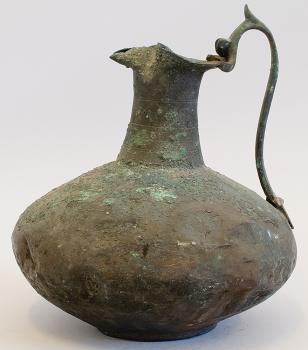American Journal of Archaeology | The Journal of the Archaeological Institute of America
You are here
Kitchenwares and Kitchen Work: A New Approach to the Bronze Food Preparation Implements of Pompeii and Their Uses
April 2024 (128.2)
Kitchenwares and Kitchen Work: A New Approach to the Bronze Food Preparation Implements of Pompeii and Their Uses
This article proposes a new method for reconstructing how bronzewares were employed in everyday acts of food preparation in first-century CE Pompeii. Through the morphologically sensitive analysis of use alterations (physical or chemical changes to the body of an object resulting from use) exhibited by bronze kitchenwares recovered from 19 properties in the town, I retrace the life histories of individual implements and offer new insights into how particular forms tended to be used. This study thus represents the first large-scale investigation of use alterations in Roman bronzewares, which rarely survive archaeologically but are amply attested in a state of exceptional preservation at the Vesuvian sites. In this article, I review the most common types of use alterations exhibited by this material, including various forms of accretion, attrition, and deformation, as well as intentional modifications (such as repairs), and consider what these tell us about the mechanics of meal-making in antiquity. Biographical sketches of two common bronze vessel forms at Pompeii, the pentola and the boiler-pitcher, offer a final illustration of the promise this sort of analysis holds for assessing the technical choices of ancient cooks, whose labor merits greater scholarly attention than it has garnered to date.
Kitchenwares and Kitchen Work: A New Approach to the Bronze Food Preparation Implements of Pompeii and Their Uses
By Aaron D. Brown
American Journal of Archaeology Vol. 128, No. 2 (April 2024), pp. 199-220
DOI: 10.1086/728736
© 2024 Archaeological Institute of America


